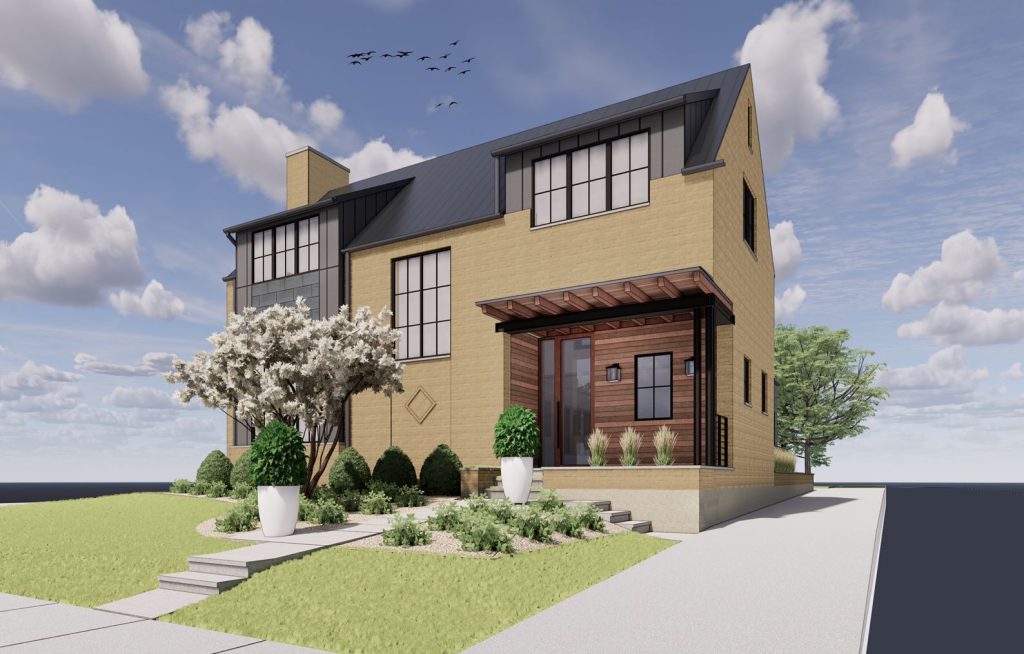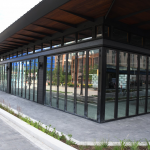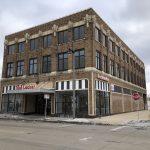Is Historic Preservation Process Broken?
Some feel city's process needs to be reformed. Are they right?
Last week was a controversial one for Milwaukee’s historic preservation process. Developer Juli Kaufmann and her partner Mike Maschek, who now live in Riverwest, had wanted to build a new home in the North Point Historic District. But after two attempts to get approval for the two-story, 2,997-square-foot house on N. Terrace Ave. from the city’s Historic Preservation Commission (HPC), they’d had enough.
It was a clear slap down of the HPC by one of the most respected developers and supporters of urbanism in town.
“The historic preservation process is so broken,” Kaufmann said in an interview yesterday with Urban Milwaukee. She said the process of getting approval took six months of work and cost her tens of thousands of dollars with nothing to show for it.
Kaufmann’s decision to pull out came on the same day the commission decided to deny a first-time developer’s request to demolish a two-story building on 11th and Mitchell, which brought criticism from Common Council President Jose Perez, the alderman representing this area, as Urban Milwaukee also reported. “The importance of this building,” Perez declared, “is subjective.”
The council president charged the commission is not operating consistently: “In certain neighborhoods, that same criteria is looked at completely different than my neighborhood is.” Perez said he would like to work with the commission on improving the process.
Mayor Cavalier Johnson has reportedly gotten involved in the issue as well, and has asked to meet with Kaufmann.
Jim Shields, long considered one of the top architects in town, was appointed to serve on the HPC when it was first created in the 1980s and was “on the commission for a very long time,” he recalls. Yet he ran into problems with the HPC when working on a redesign of the Marcus Performing Arts Center’s grove of Horse Chestnut trees designed by famed landscape architect Dan Kiley, as Urban Milwaukee reported. The commission, he contends, was within its guidelines to oppose tearing down the grove of trees, but went too far in deciding to give the Marcus Center building itself historic designation.
One key issue for historic preservation is “the integrity of materials” for the building, Shields notes. In the case of the Marcus Center the entire building had been re-clad and the entire front of the building replaced by a new lobby with different materials. Yet “no amount of discussion would move the commission” away from its decision to give the building historic designation, he says. Ultimately the Common Council overruled the HPC and allowed the entire Marcus Center project.
And its creation has helped save a lot of historic buildings, he says: “Brady Street survived due to the Historic Preservation Commission.”
Shields believes the HPC was right to vote in favor of saving the building on 11th and Mitchell from demolition. “That’s pretty handsome art deco building,” he notes. “Buildings of that particular vintage exist in small numbers in Milwaukee, compared to Victorian and Italianate.”
He notes there are checks and balances on the HPC’s power. First, the Common Council can override any commission decision, as it did for the Marcus Center. Second, the HPC has no power over the interior of buildings, which gives developers flexibility to re-conceive buildings in a a way that makes preservation economically feasible.
Kaufmann, though critical of the HPC process for new buildings, says it has worked better for existing buildings, including for projects she has worked on. “It plays an important role and has been helpful,” she says.
Shields notes that the North Point Historic District is a unique area in Milwaukee. “The level of quality of the existing homes there is just extraordinarily high. It’s a real challenge,” he adds, to build a new home at that level of quality.
So are there any ways the city could improve the HPC process? Shields notes that the 1970s state enabling legislation for the HPC was based on the National Register for Historic Places, yet ignores its emphasis on integrity of materials. Instead the legislation gave 10 examples of “integrity of association” (built by a great architect, someone famous like Lincoln slept there, important historic connection to an ethnic group, etc.) “The Milwaukee HPC treats those 10 points as the whole criteria for historic designation,” Shields says.
Kaufmann notes there are issues with the city staff who research HPC issues and prepare a report. “The night before the HPC committee meeting we still hadn’t gotten the report,” she says, which made it very difficult to prepare a response.
And if there is a change in the HPC staff member who handles a case, you may get “an entirely different interpretation of the city policy,” she notes.
Then there is the role of Ald. Bob Bauman, who has served on the HPC for 16 years. As one longtime observer of the committee notes, Bauman can be “a bull in china shop. His impact on the process is incredibly outsized.” If the alderman misses a meeting that can completely alter the outcome.
This is not the first time there has been discussion of trying to reform the HPC process. Back in 2011 there was much controversy surrounding the approval for the Marriott Hotel on Milwaukee St. and Wisconsin Ave., as Tom Bamberger wrote for Milwaukee Magazine, and the outsized role of Bauman figured in the story. Then Mayor Tom Barrett was “very afraid to rock Bauman’s boat” on HPC issues, a city insider told the magazine.
But Bauman has always argued he works within the rules of the HPC. Can they be improved? That’s a discussion worth having.
Political Contributions Tracker
Displaying political contributions between people mentioned in this story. Learn more.
- December 17, 2020 - Cavalier Johnson received $100 from Patti Keating Kahn
- October 13, 2019 - Robert Bauman received $100 from Patti Keating Kahn
- December 27, 2017 - Tom Barrett received $400 from Patti Keating Kahn
- May 22, 2017 - Tom Barrett received $400 from Patti Keating Kahn
- March 23, 2017 - Robert Bauman received $250 from Patti Keating Kahn
- March 22, 2017 - Robert Bauman received $100 from Tim Gokhman
- May 20, 2016 - Robert Bauman received $100 from Tim Gokhman
- May 10, 2016 - Robert Bauman received $250 from Patti Keating Kahn
- May 4, 2016 - José G. Pérez received $100 from Tim Gokhman
- February 20, 2016 - Cavalier Johnson received $250 from Robert Bauman
- February 12, 2016 - Robert Bauman received $100 from Tim Gokhman
- January 27, 2016 - Tom Barrett received $400 from Patti Keating Kahn
- November 19, 2015 - Tom Barrett received $400 from Patti Keating Kahn
- May 5, 2015 - José G. Pérez received $10 from Cavalier Johnson
- March 27, 2015 - Robert Bauman received $100 from Tim Gokhman
- March 4, 2015 - José G. Pérez received $100 from Tim Gokhman
- November 12, 2014 - José G. Pérez received $100 from Tim Gokhman
Murphy's Law
-
Top Health Care Exec Paid $25.7 Million
 Dec 16th, 2025 by Bruce Murphy
Dec 16th, 2025 by Bruce Murphy
-
Milwaukee Mayor’s Power in Decline?
 Dec 10th, 2025 by Bruce Murphy
Dec 10th, 2025 by Bruce Murphy
-
Total Cost of Foxconn Is Rising
 Dec 8th, 2025 by Bruce Murphy
Dec 8th, 2025 by Bruce Murphy























I think the outcome of that 2011 Mariott Hotel controversy was a good one. The historic facade on Wisconsin Ave was preserved, which makes that block look so much nicer than it would have otherwise.